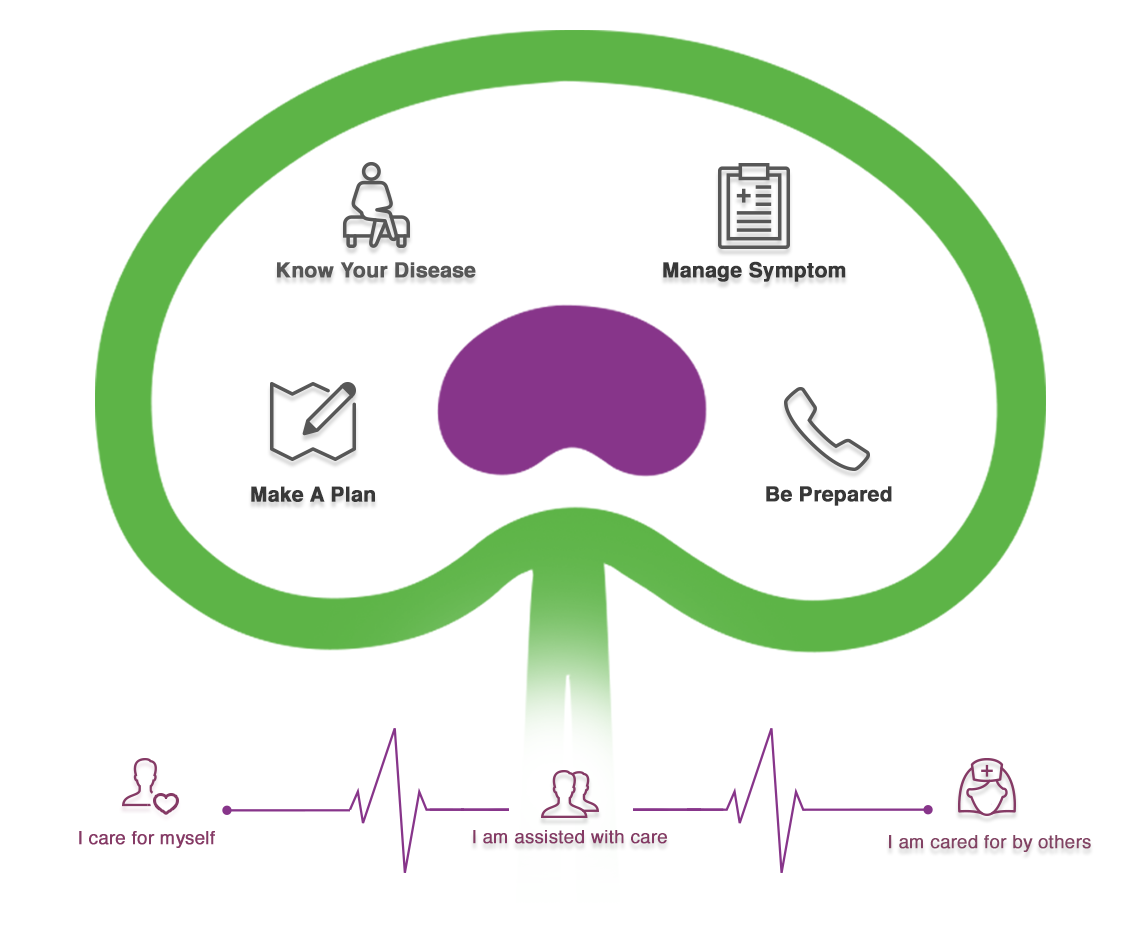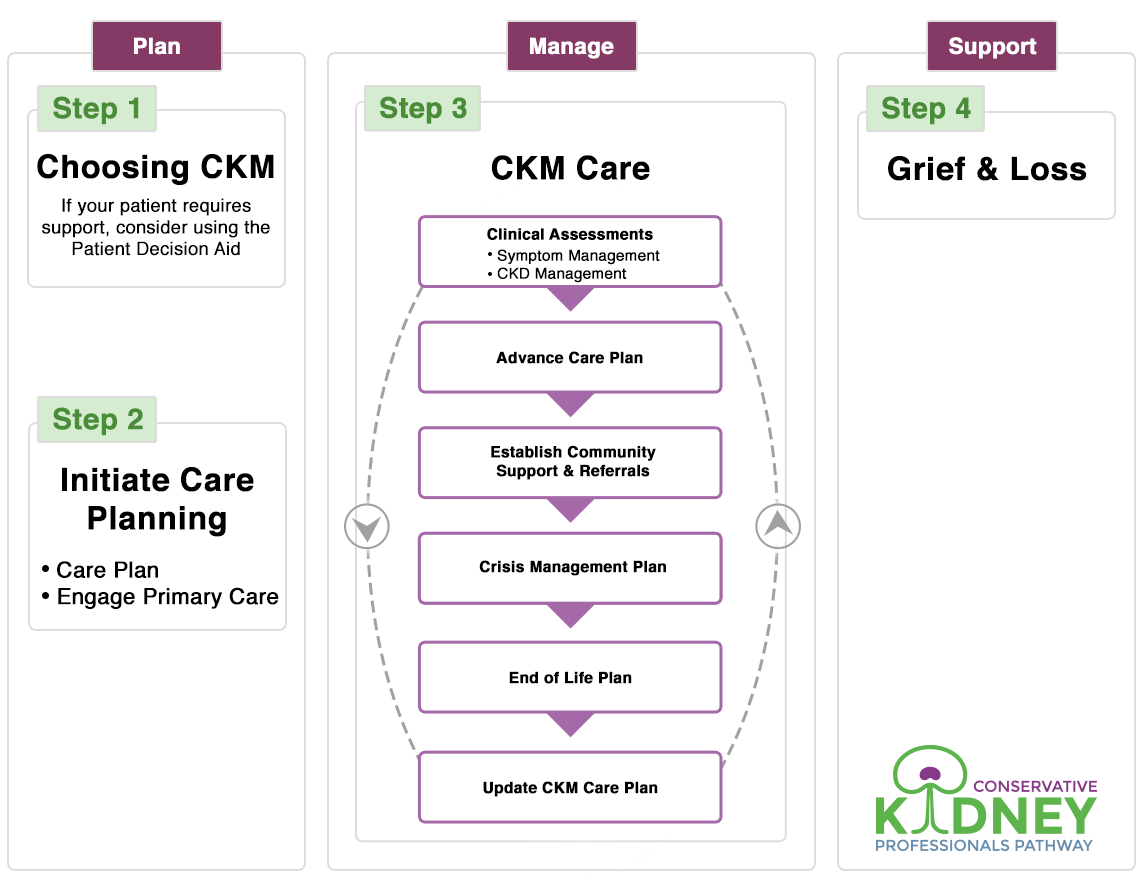Blood Pressure Guideline
Guiding Principles
Hypertension can be a cause and complication of CKD. Blood pressure should be monitored on a regular basis, including an assessment for orthostatic hypotension.
The primary goal of blood pressure management in this population is to minimize the risk of falls and optimize cognition while avoiding very high readings.
GFR 15 - 5 | Slow Decline/Deteriorating | Last 0-5 years of life
In line with guidelines for the care of frail older persons, we recommend relaxing the suggested blood pressure targets for CKM patients with a GFR ≤ 15 to ≤160/90. This applies to patients with diabetes as well.
Decisions about specific medications will depend on the patient and his or her co-morbidities. Prescribers should attempt to use medications that work for more than one condition and should take into account that the patient might have strong feelings about continuing or stopping certain medications.
Diuretics will likely be one of the last medications stopped.
GFR 5 - 0 | Intensive/Near Death | Last 0-2 months of life
When a patient becomes bedbound, it is usually no longer necessary to monitor blood pressure. Blood pressure medications can be stopped at this point.
Diuretics are a unique consideration and can play an important role in the relief of dyspnea associated with volume overload. If a patient continues to eat and drink, it is acceptable to continue with diuretics. In most cases, once a person is no longer eating or drinking, diuretics should be stopped. (Eg. When urine output is < 250 cc/day on the maximum furosemide (Lasix) dose of 120 mg BID, furosemide (Lasix) should be stopped.)
Additional Resources:



